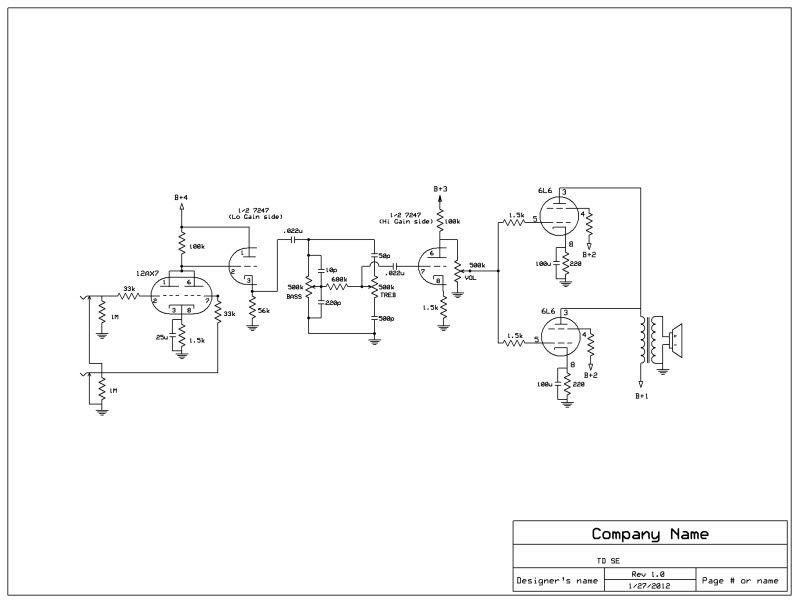I've been thinking about trying to build a simple original design & came up with this. It's primarily intended as a harp amp & has a few features to that end (I hope).
I wanted it to have fatter sound & have extra bottom end available, so I paralleled the input stage (single/parallel jacks) & use the James-style tone control (variation on a lower-loss version I found values for) driven by a cathode follower.
I also paralleled the output stage for more watts, though it will probably still need a line into the PA. I don't play harp (in public) but play with a harp player on a regular basis & talked a little about it with him.
I chose to put the tone section before the last gain stage where alot of designs I looked at fed the power section directly from the tone circuit, but that didn't make sense to me. Seemed better to run the tweaked signal through a gain stage before the output. Advantages/disadvantages?
I'm afraid I'm still a "cut & paste" designer, so the values used are fairly standard from all the schematics I've amassed of similar circuits. The tone circuit was modeled in TSC so I'm pretty sure those should be OK.
Things I'm unsure of:
Coupling cap values (placement OK?)
Screen resistor & voltage?
OT impedance with parallel output tubes?
Implementing a line-out (possible to include the power section?)
I have not finished designing/drawing the power supply yet (this was my first drawing in ExpressSCH), I was thinking around 350V for B+ & also want to incorporate VVR on B+4. The guy I play with has a modded PR with lowered pre voltage & likes the sound. I'll probably go with a SS rectifier to start.
Anyway, there it is any/all advice & insights are appreciated.
Thanks, TD

